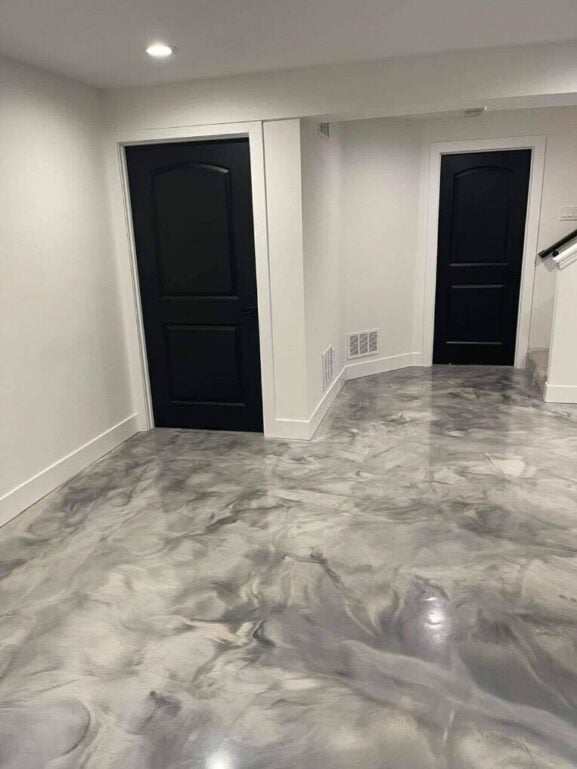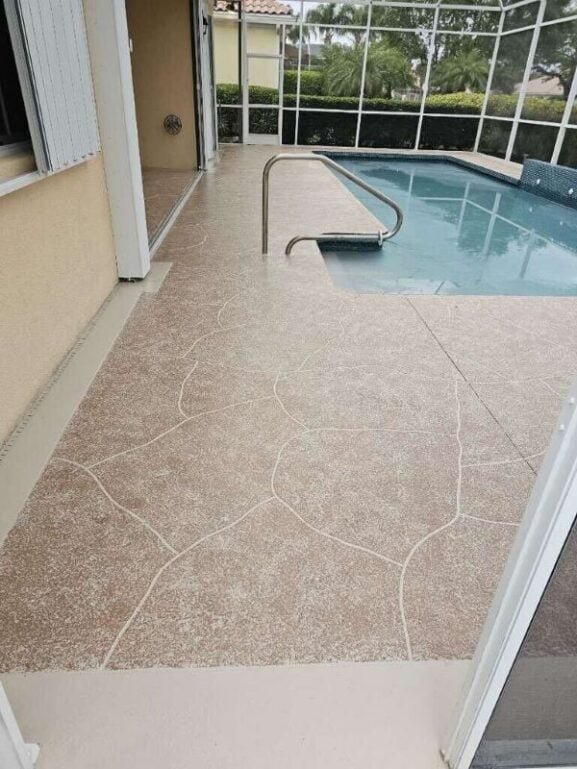Important Factors To Consider When Choosing Between Concrete Coatings And Epoxy In Bradenton
- How does the durability of epoxy compare to concrete coatings in high-traffic areas
- Which coating is better for areas with extreme temperature fluctuations in Bradenton
- How does the installation process of epoxy compare to that of concrete coatings in Bradenton
- How do epoxy and concrete coatings perform in terms of scratch resistance
- Are there specific applications where epoxy coatings are more beneficial than urethane coatings
When choosing between concrete coatings and epoxy flooring in Bradenton, several factors should guide your decision based on your specific needs and priorities. Below are the key considerations:
1. Durability and Traffic Levels
- Epoxy Flooring: Highly durable and ideal for high-traffic areas like garages, basements, or commercial spaces. It resists heavy loads, spills, and abrasion, making it suitable for both residential and industrial use.
- Concrete Coatings: Generally less durable compared to epoxy but can suffice for low-traffic areas or spaces requiring a natural look.
2. Aesthetic Preferences
- Epoxy Flooring: Offers a wide range of finishes, including metallic, flake, and high-gloss options. It is perfect for creating decorative designs and polished surfaces.
- Concrete Coatings: Provides a more natural appearance with fewer design options. It may be preferred if minimalistic aesthetics are desired.
3. Maintenance Requirements
- Epoxy Flooring: Requires minimal maintenance, with resistance to stains, chemicals, and dirt. Cleaning involves simple sweeping or mopping.
- Concrete Coatings: May need periodic reapplication or sealing to maintain its appearance and protection.
4. Installation Process
- Epoxy Flooring: Requires proper preparation and skilled application. The curing process can take several days, limiting usability during installation.
- Concrete Coatings: Easier to apply but might require more frequent upkeep over time.
5. Environmental Factors
- Epoxy Flooring: Susceptible to UV exposure, which can cause yellowing if not UV-resistant. Some formulations are designed for damp or humid conditions.
- Concrete Coatings: May perform better in outdoor settings with less direct sunlight exposure but lacks the chemical resistance of epoxy.
6. Budget Considerations
- Epoxy Flooring: Higher upfront cost due to material and labor but offers long-term savings through durability and low maintenance needs.
- Concrete Coatings: Lower initial cost but may incur additional expenses over time due to reapplication requirements.
By weighing these factors—durability, aesthetics, maintenance, environmental suitability, and budget—you can make an informed decision tailored to your project in Bradenton.
How does the durability of epoxy compare to concrete coatings in high-traffic areas
When comparing the durability of epoxy to concrete coatings in high-traffic areas, epoxy flooring generally outperforms concrete coatings:
Epoxy flooring offers superior durability and is ideal for high-traffic areas like garages, basements, or commercial spaces. It provides excellent resistance to wear, heavy loads, and frequent use, making it better suited for demanding environments. Epoxy creates a tough, protective layer on concrete floors that can handle heavy traffic and resist chemicals.
In contrast, concrete coatings, while durable, are generally less robust compared to epoxy in high-traffic settings. They may suffice for low-traffic areas but typically don’t match epoxy’s performance under intense use.
Key Durability Factors
Wear Resistance
Epoxy flooring maintains its structural integrity and glossy appearance even under heavy loads and frequent use. It’s highly resistant to daily wear, making it ideal for areas with constant movement or dragging of items.
Chemical Resistance
Epoxy provides superior chemical resistance, protecting against spills, oils, and corrosive materials. This makes it particularly suitable for industrial settings or areas exposed to harsh substances.
Impact Resistance
Epoxy coatings can withstand heavy impacts better than most concrete coatings, though they may chip or peel if subjected to extreme force.
Longevity
While both options are durable, epoxy flooring typically offers higher longevity than most concrete sealers or coatings. However, in areas with extremely heavy traffic, such as warehouse forklift paths, even epoxy may wear down faster and require more frequent maintenance.
In conclusion, for high-traffic areas, epoxy flooring is generally the more durable choice, offering better resistance to wear, chemicals, and impacts compared to standard concrete coatings.
Which coating is better for areas with extreme temperature fluctuations in Bradenton
For areas in Bradenton with extreme temperature fluctuations, polyurea coatings are generally a better choice compared to epoxy. Here’s why:
- Temperature Flexibility:
- Polyurea coatings can withstand a wider range of temperatures, from as low as -30°F to as high as 140°F, without cracking or peeling. They expand and contract with the substrate, making them ideal for freeze-thaw cycles and significant temperature changes.
- Epoxy coatings, on the other hand, are more rigid and prone to cracking in extreme cold or heat. They can also soften or peel under prolonged exposure to high temperatures.
- Curing Process:
- Polyurea can be applied in extreme temperatures, including below freezing, making it versatile for various climates.
- Epoxy requires a minimum temperature of 50°F for proper curing. In cold conditions, the curing process slows significantly or may not occur at all without additional heating measures.
- UV Stability:
- Polyurea offers superior UV resistance, maintaining its color and integrity under sunlight. This makes it suitable for outdoor applications in sunny climates like Bradenton.
- Epoxy is more prone to yellowing and degradation when exposed to UV rays over time.
- Durability in Extreme Conditions:
- Polyurea is more flexible and resistant to wear and tear caused by temperature variations, making it a more reliable option for outdoor or climate-exposed surfaces.
- Epoxy performs well in stable indoor environments but struggles under harsh weather conditions or significant thermal expansion and contraction.
In summary, polyurea coatings offer better performance and longevity in areas with extreme temperature fluctuations due to their flexibility, UV stability, and wide application range. Epoxy is better suited for controlled indoor environments or milder climates.
How does the installation process of epoxy compare to that of concrete coatings in Bradenton
The installation process of epoxy flooring differs significantly from that of concrete coatings in Bradenton:
Epoxy Flooring Installation
- Surface Preparation: The process begins with diamond grinding the concrete floor to create a proper profile for adhesion.
- Priming: A moisture vapor barrier primer or 100% solids epoxy is applied as a foundation.
- Epoxy Application: The main epoxy layer is applied, which provides durability and resistance to abrasion.
- Decorative Elements: If desired, decorative flakes are broadcast into the wet epoxy by hand.
- Top Coat: A urethane clear coat is added for additional protection and longevity.
- Curing Time: The entire process can take several days to fully cure, limiting the use of the space during this time.
Concrete Coating Installation
- Surface Cleaning: The concrete surface is thoroughly cleaned and any cracks are repaired.
- Application: Concrete coatings, such as sealers, are typically easier to apply and can often be done in a single day.
- Drying Time: Many concrete coatings dry faster than epoxy, allowing for quicker use of the space.
- Reapplication: Concrete coatings may require more frequent reapplication or sealing to maintain their protective properties.
In Bradenton, some companies offer a 1-day installation process for polyaspartic/polyurea coatings, which is faster than traditional epoxy installations. This quick turnaround can be advantageous for homeowners who want to minimize disruption.
Overall, epoxy flooring installation is generally more complex and time-consuming but offers superior durability and chemical resistance. Concrete coatings, while easier to apply, may require more frequent maintenance in the long run.
How do epoxy and concrete coatings perform in terms of scratch resistance
When comparing the scratch resistance of epoxy and concrete coatings, the performance varies based on their composition and application:
Epoxy Coatings
- Scratch Resistance: Epoxy coatings are moderately scratch-resistant due to their rigid polymer structure. However, they are more prone to scratching than some alternatives, especially in high-traffic areas or when exposed to sharp objects or debris.
- Enhancements: Adding a topcoat, such as polyurethane or polyaspartic, can significantly improve the scratch resistance of epoxy floors. These topcoats provide a harder, more abrasion-resistant surface.
- Durability: While epoxy is durable overall, its rigid nature makes it less forgiving under abrasive conditions compared to more flexible coatings like polyurea or urethane.
Concrete Coatings
- Scratch Resistance: Standard concrete coatings (e.g., sealers) generally have lower scratch resistance compared to epoxy. They are often softer and less protective unless enhanced with additives or specialized formulations.
- Performance Variability: The scratch resistance of concrete coatings depends on the type used. For example, polyurea-based concrete coatings offer better abrasion and scratch resistance than traditional sealers.
Summary
Epoxy offers better scratch resistance than basic concrete coatings but is still susceptible to scratches under heavy use. For improved performance, a topcoat like polyurethane or polyaspartic can be applied over epoxy. If maximum scratch resistance is a priority, polyurea or urethane-based coatings may be better options.
Are there specific applications where epoxy coatings are more beneficial than urethane coatings
Epoxy coatings are more beneficial than urethane coatings in specific applications where strength, chemical resistance, and adhesion to concrete are critical. Here are the key scenarios where epoxy outperforms urethane:
1. Industrial Floors with Heavy Loads
- Epoxy’s high compressive strength makes it ideal for environments with heavy machinery or equipment, such as warehouses, factories, and manufacturing plants. It can withstand crushing forces better than urethane.
2. Chemical-Intensive Environments
- Epoxy coatings offer superior resistance to harsh chemicals, acids, and bases. This makes them the preferred choice for chemical plants, laboratories, and containment areas where exposure to corrosive substances is frequent.
3. FDA-Regulated Facilities
- Epoxy creates a seamless, non-porous surface that is easy to clean and sanitize. This makes it ideal for food preparation areas, pharmaceutical facilities, and other environments requiring strict hygiene standards.
4. Concrete Repair and Surface Preparation
- Epoxy’s ability to bond chemically and mechanically to concrete allows it to fill cracks and imperfections effectively. It is often used as a repair or build coat before applying other finishes.
5. Water-Resistant Applications
- Epoxy is highly resistant to water penetration, making it suitable for environments prone to spills or moisture exposure, such as industrial kitchens or storage areas.
While urethane coatings excel in flexibility, UV resistance, and abrasion resistance (making them better for outdoor or high-traffic areas), epoxy is the superior choice for heavy-duty applications requiring maximum strength and chemical durability.



